This website uses cookies so that we can provide you with the best user experience possible. Cookie information is stored in your browser and performs functions such as recognising you when you return to our website and helping our team to understand which sections of the website you find most interesting and useful.
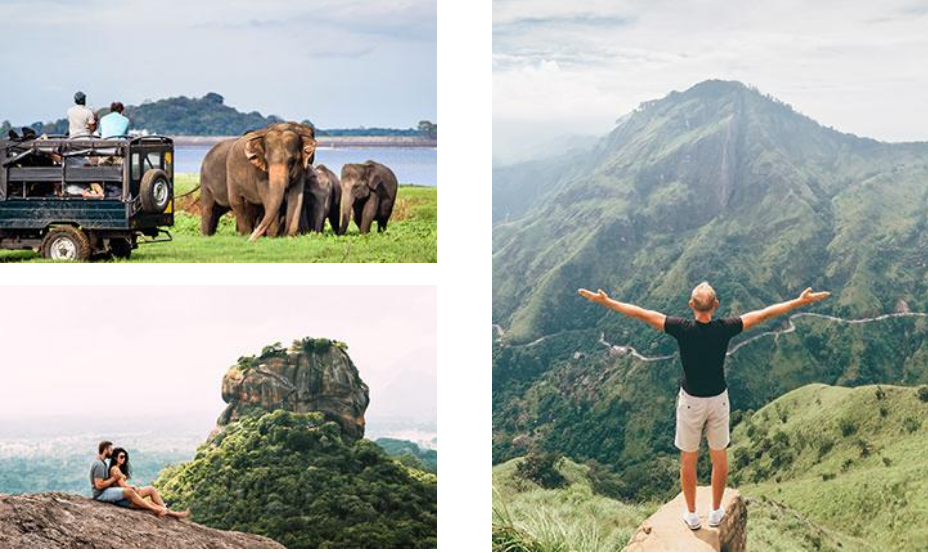
Wildlife of Sri Lanka
What Sri Lanka lacks in scale, it more than makes up for in biodiversity. There are some 100 sites of protected land across the country, providing sanctuary to a tremendous variety of endemic trees and flowers, birds and animals, amphibians, reptiles and insects.
Yala National Park
Leopard spotting is the great drawcard of Sri Lanka’s premier wildlife sanctuary, since Yala National Park has around 30 of the normally secretive cats roaming around the park. Driving around the bumpy rust-colour tracks through dry lowland plains, past jungle, lush wetlands and pristine sandy beaches, you may see families of elephants, vast herds of sambar deer, langur and toque monkeys, Sri Lankan sloth bears in the palu trees, buffalo wallowing in mud puddles, crocodiles sunbathing on the riverbanks, wild pigs running around, and more. The park makes for fabulous twitching territory, with bird lovers able to spot around 220 different species of birds inhabiting or visiting the park.
Tip: No-one really gets bored of animal spotting, but you can switch up your visit with a trip to Yala’s amazing Buddhist temples and ancient sites. The most popular of these is Sithulpauwwa, an ancient rock temple, once home to 12,000 Buddhist monks. The Magul Maha Viharaya, another ancient Buddhist temple, is said to be where King Kavantissa married in the 2nd century BC.
Best time to go: January, February, May-August, October-December, (still good in March, April and September).
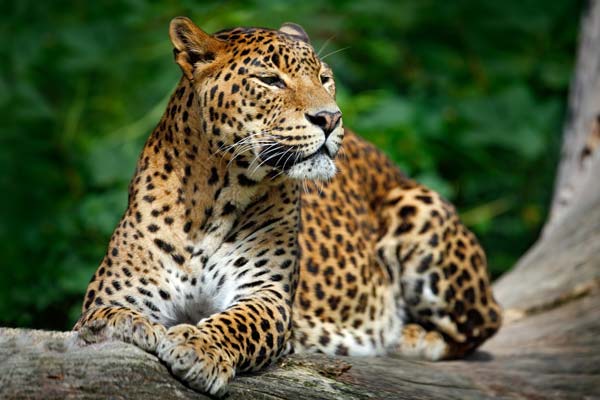
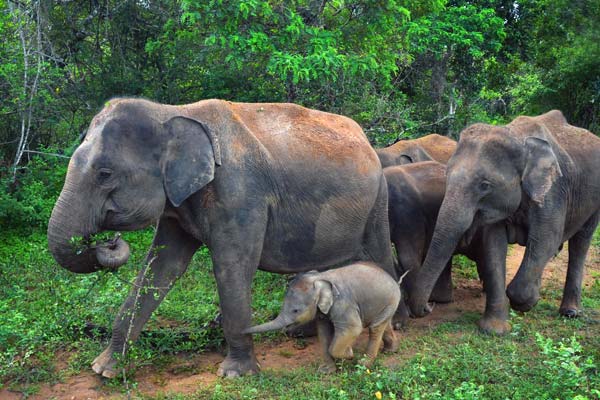
Udawalawe National Park
Elephant watching is exceptional in Udawalawe National Park, as the sprawling 308-square-kilometre (120 sqm) park with its dam and massive reservoir, hosts around 500 of the endangered animals. You’re practically guaranteed the chance to see family herds walking through scrublands, feeding, and spraying each other playfully in the water.
Located just south of the central mountains, the park also provides an important marshland habitat for waterbirds, as well as a number of raptor species. Mammals such as giant squirrels, mongoose, wild buffalo, leopards, golden jackals, Asian palm civets and Indian hares are also present, along with toque macaque monkeys and tufted grey langurs. Butterflies are a lesser known special feature – there can be around 135 species fluttering around the sanctuary, particularly near satin trees.
Tip: The Uda Wawale Elephant Transit Home looks after orphaned calves in the park and releases them when they’re old enough to fend for themselves. It’s worth a visit if you have time, to watch the babies being fed.
Best time to go: December – March. Also good April and September-November.
Wasgamuwa National Park
Another wonderful place to spot large herds of elephants in Sri Lanka, Wasgamuwa National Park is also known as a biodiversity hotspot, with 143 species of birds and 150 floral species in the park. Located in the dry lowlands of the North Central province, it’s common to spot deer, purple-faced langur and toque macaque monkeys, however sloth bears and leopards are rarely seen. Water monitors, skinks, lizards and other reptiles, as well as 50 butterfly species can also be found here.
Best time to go: November to May (elephants migrate to Minneriya and Kaudulla National Parks for rest of the year).
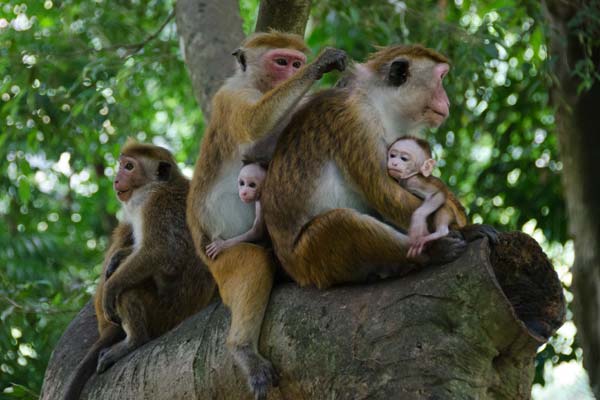
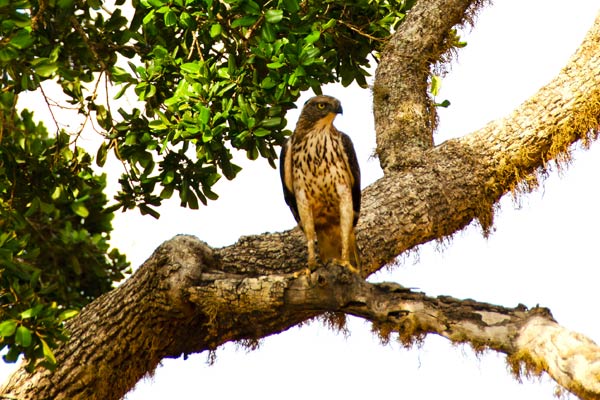
Sinharaja Forest Reserve
Located in the wet, south-western lowlands of Sri Lanka, this UNESCO World Heritage forest is a very special place for naturalists, as it’s the last remaining virgin tropical rainforest on the island. Entering on foot with a park guide, you’ll notice the canopy, towering up to 45m, is alive with the sounds of birds and echoing animal calls, while the undulating terrain below is crossed by a network of bubbling rivers and streams.
The pristine evergreen forest is an important conservation area for an abundance of endemic birds and over half of the country’s endemic mammals and butterflies, as well as many kinds of insects, amphibians and reptiles. More than 60% of the trees in the reserve are endemic to Sri Lanka, with many species actually considered rare and endangered. Leopards and elephants are rarely seen on walks here, though you may spot tracks. Common sightings include purple-faced langur monkeys, barking deer and squirrels, giant squirrels and chameleon lizards. Perhaps the most notorious animal in residence is the leech, although bites are pretty harmless.
Tip: The walks in the Sinharaja Forest Reserve are not difficult (although they can be slippery underfoot) and they’re suitable for people of any ability. Bring your binoculars to make the most of a visual treat – you don’t have to be a bird lover to appreciate the beauty of Sinjaraja’s vast, colourful mixed flocks, which can include red-faced malkoha, green-billed coucal and Sri Lankan blue magpie.
Best time to go: August to September and January to March are the driest months, though it’s possible to visit year-round.
Minneriya & Kaudulla National Parks
Located an hour from each other in the dry North Central province around two large reservoirs, Minneriya and Kaudulla are particularly well known for their seasonal visitation of elephants, who migrate from Wasaguma National Park. In September and October, over 300 of the endangered animals congregate at the Minneriya Lake. The water largely dries out to create a tasty rich grassland, providing a lush grazing area for the herds and wonderful viewing opportunities for visitors in open-top safari jeeps. The two parks are both considered important bird areas, and large flocks of cormorant numbering up to 2,000 have been known to pass through, while water species such as pelicans and herons are often found near the irrigation tanks and canals. Endemic mammal species such as purple-faced langur and tocque macaques, Sri Lankan axis deer and samba deer also frequent the park.
Best time to go: May to September for the dry season, September and October for the elephant migration.
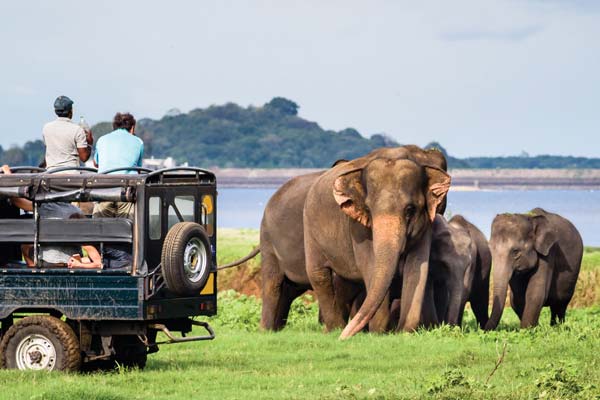
We are passionate adventure travelers who want to share the world and our travel experiences with everyone…
